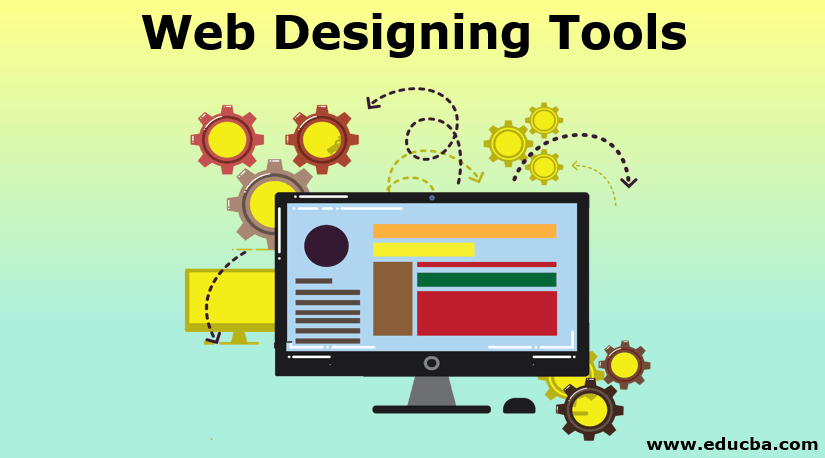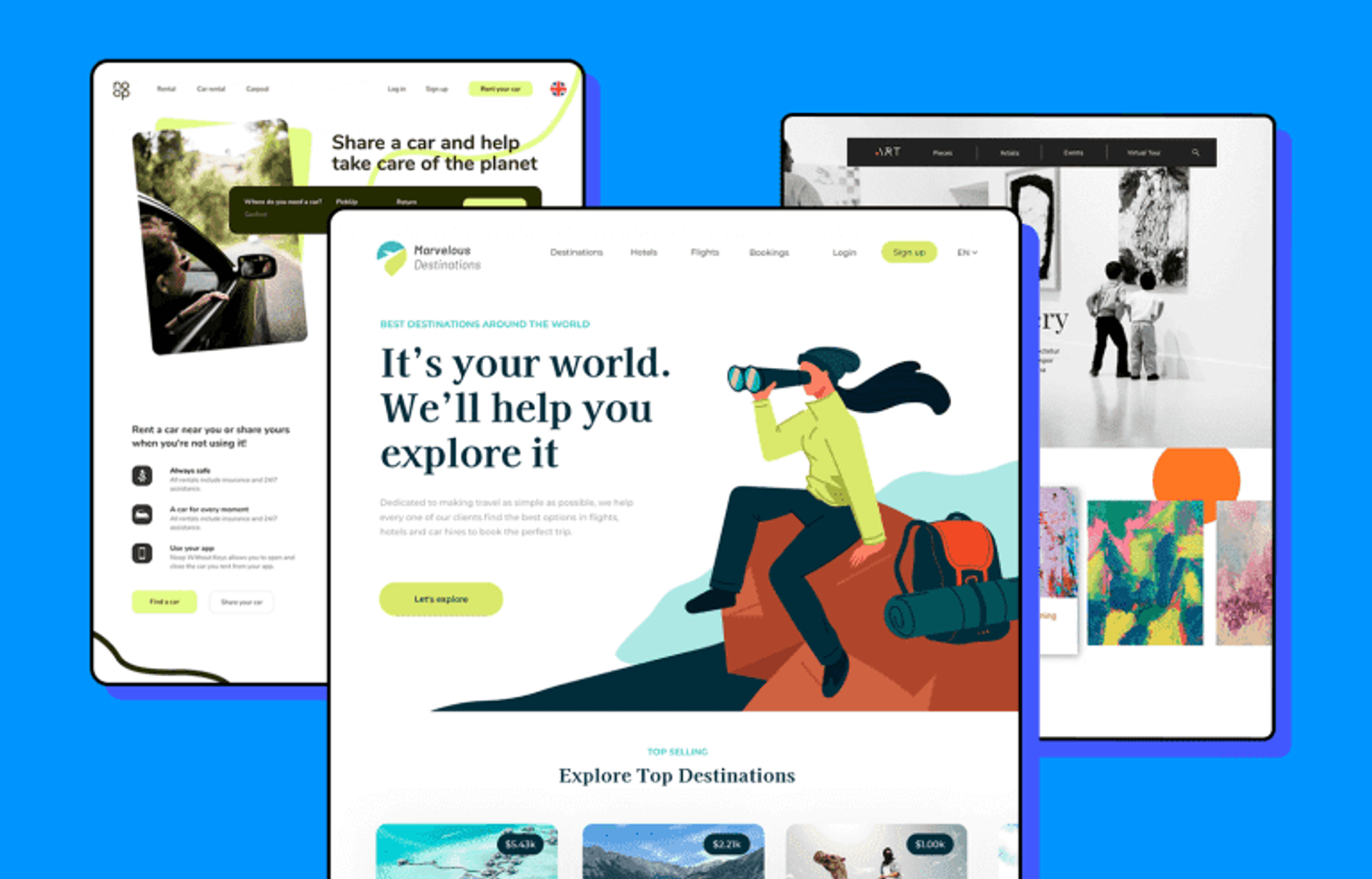Aligned Position Web Design: Tailor-Made Web Design Solutions for Maximum User Engagement
The Most Effective Sorts Of Website Design to Improve User Experience and Interaction
In the ever-evolving landscape of electronic communication, the efficiency of Web design considerably affects individual experience and involvement. Numerous layout strategies, such as minimal, receptive, and interactive formats, each deal one-of-a-kind benefits that can provide to varied individual needs.
Minimalist Website Design
As electronic landscapes come to be significantly chaotic, minimal website design has arised as an effective technique to improving individual experience. This design philosophy prioritizes simpleness, concentrating on necessary aspects while getting rid of unnecessary distractions. By making use of adequate white area, straightforward navigation, and a minimal shade palette, minimalist layout cultivates quality and guides user focus to crucial material.
The core principle of minimal Web design is to develop a seamless communication for individuals. By decreasing cognitive load, individuals can swiftly realize info without feeling bewildered. This direct method not just enhances functionality but additionally encourages involvement, as visitors are extra likely to discover a site that is aesthetically attractive and easy to browse.
Additionally, minimal design usually highlights typography and images, utilizing these components purposefully to communicate messages effectively. This emphasis on important parts can enhance brand name identification and create a remarkable user experience. In significance, minimalist website design is not just a fad; it is a thoughtful methodology that acknowledges the relevance of user-centered design. By removing away nonessential components, developers can create a more appealing, reliable, and enjoyable Web experience for all individuals.
Receptive Website Design
In today's varied electronic environment, responsive Web design has become vital for producing a smooth individual experience throughout a wide variety of tools. As customers accessibility internet sites on smartphones, desktop computers, laptop computers, and tablets, the ability of a site to adapt its layout and web content to various display sizes and resolutions is important.
Responsive Web design uses adaptable grids, images, and CSS media questions to make certain that Web content exists optimally, no matter of the gadget used. This strategy not just improves the visual allure of an internet site but additionally significantly improves use. Users are more probable to involve with a website that supplies a regular experience, as it removes the frustration of needing to focus or scroll exceedingly.
By embracing receptive style, services can improve their exposure and get to a broader audience. In recap, receptive Web style is a basic practice that improves individual experience, involvement, and overall fulfillment.
Interactive Web Design
Responsive website design lays the groundwork for improving user experience, however interactive Web style takes this an action better by engaging users in a more dynamic way - Aligned Position Web Design. By including elements such as animations, clickable prototypes, and real-time responses, interactive website design astounds individuals, attracting them right into a richer browsing experience
This technique not just fosters engagement however likewise motivates customers to discover material proactively instead than passively eating it. Strategies such as gamification, where users earn rewards for completing tasks, can substantially boost the moment invested on a website and enhance general contentment. Furthermore, interactive features can streamline intricate details, making it extra absorbable and delightful.

Integrating interactive layout aspects can additionally lead to greater conversion prices, as users are most likely to engage with a site that proactively entails them. Aligned Position Web Design. Ultimately, interactive website design changes user experiences into remarkable trips, guaranteeing that site visitors return time after time
Flat Design
Characterized by its minimalistic strategy, level design emphasizes simplicity and functionality, removing unnecessary elements and focusing on vital functions. This style approach focuses on functionality, making sure that individuals can navigate interfaces with simplicity and effectiveness. By employing a clean visual, level layout gets rid of the clutter typically discovered in much more ornate styles, therefore boosting customer focus on content and functionality.
The hallmark of level style depends on its use vibrant shades, basic typography, and geometric shapes. These elements add to an aesthetically attractive interface that is both approachable and modern. In addition, level design cultivates a feeling of clarity, allowing users to determine vital actions and details without diversion.
In addition, flat style is specifically effective in responsive Web layout, as its simplicity equates well throughout numerous devices and screen dimensions. By concentrating on essential functions, level layout not just meets individual requirements yet additionally encourages seamless interaction, making it a crucial part of effective Web style methods.
Flexible Web Design
Adaptive Web style personalizes the individual experience by developing numerous fixed layouts tailored to different screen sizes and gadgets. Unlike responsive style, which fluidly changes a single design, her comment is here flexible style utilizes unique designs for certain breakpoints, ensuring optimal discussion on numerous systems. This strategy permits developers to concentrate on the special attributes of each gadget, improving functionality by providing exactly what users need based upon their context.
Among the main advantages of adaptive Web design is its ability to optimize load times and efficiency. By offering tailored content and images that fit the customer's tool, web you can try this out sites can lessen data usage and boost loading rates. This is especially helpful for individuals with slower connections or minimal information plans.

Furthermore, flexible design promotes a much more regulated and consistent branding experience. Since designers produce numerous layouts, they can make sure that the aesthetic elements align with the brand name's identification throughout different platforms - Aligned Position Web Design. This leads to a natural customer experience, enhancing interaction and advertising customer retention
Conclusion
In final thought, the combination of minimal, receptive, and interactive website design principles substantially boosts customer experience and engagement. Minimalist design promotes clearness and focus, while receptive style makes certain flexibility throughout numerous devices, promoting ease of access. Interactive style mesmerizes individuals with vibrant aspects, motivating expedition and customization. Jointly, these layout comes close to add to the production of straightforward settings that not just enhance fulfillment yet likewise drive higher conversion rates, highlighting their vital value in modern website design strategies.

Minimalist style promotes quality and emphasis, while receptive layout ensures adaptability across various gadgets, promoting availability. Jointly, these style approaches contribute to the development of easy to use atmospheres that not only enhance fulfillment yet likewise drive greater conversion rates, highlighting their vital value in contemporary Web design strategies.